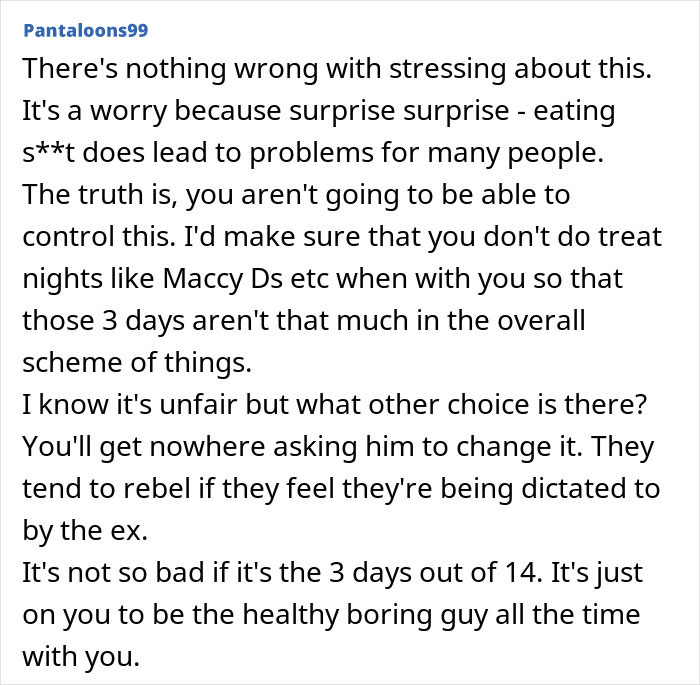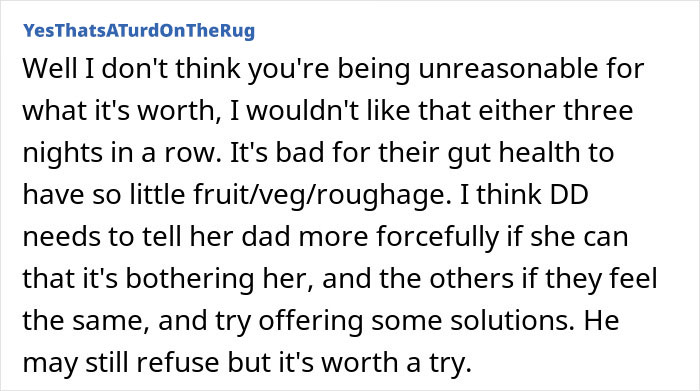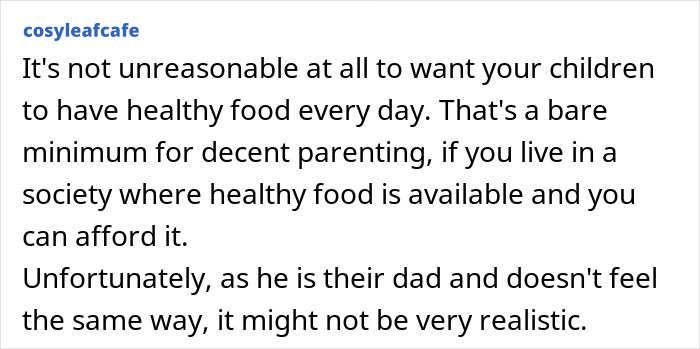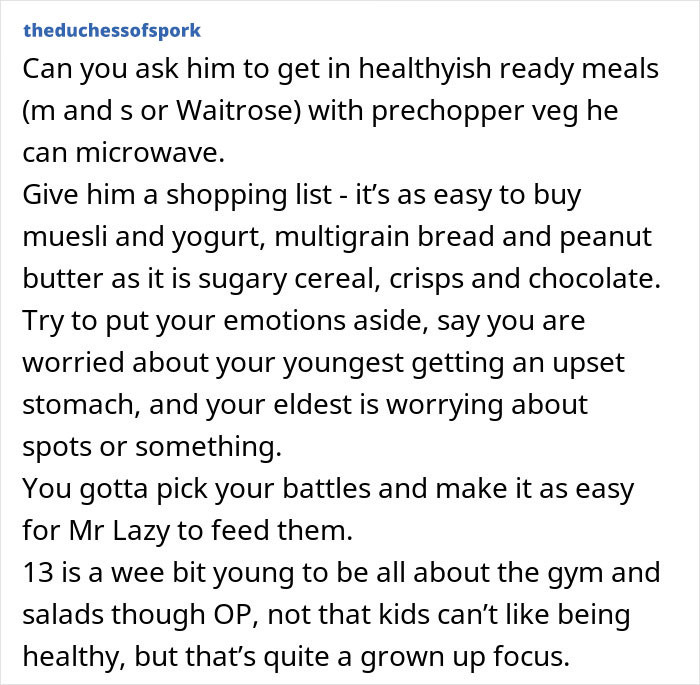For kids to grow strong and healthy, they need a good diet. This means incorporating fresh produce and nutrient-dense ingredients into their meals and avoiding highly sugary and processed foods. Eating well helps children to stabilize energy, prevent future health issues, and even improve their mental health.
This mom did her best to ensure that her kid’s diet stayed healthy. However, when the children would stay with their dad, it all went to waste, as he only fed them takeout and junk food. Worried for their well-being, she voiced her concerns to him, which unfortunately were ignored.
Scroll down to find the full story and a conversation with Stacey Woodson, MS, RDN, LDN, registered dietitian and author, who kindly agreed to tell us more about children’s nutrition.
Children need a healthy diet to grow happy and strong

However, this dad was completely unbothered by such a fact, feeding his children purely fast food
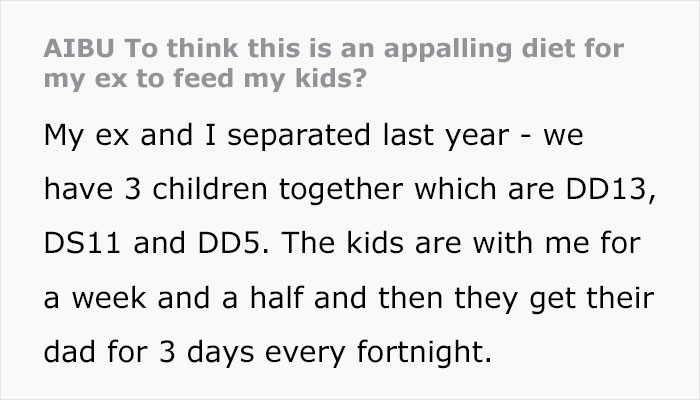
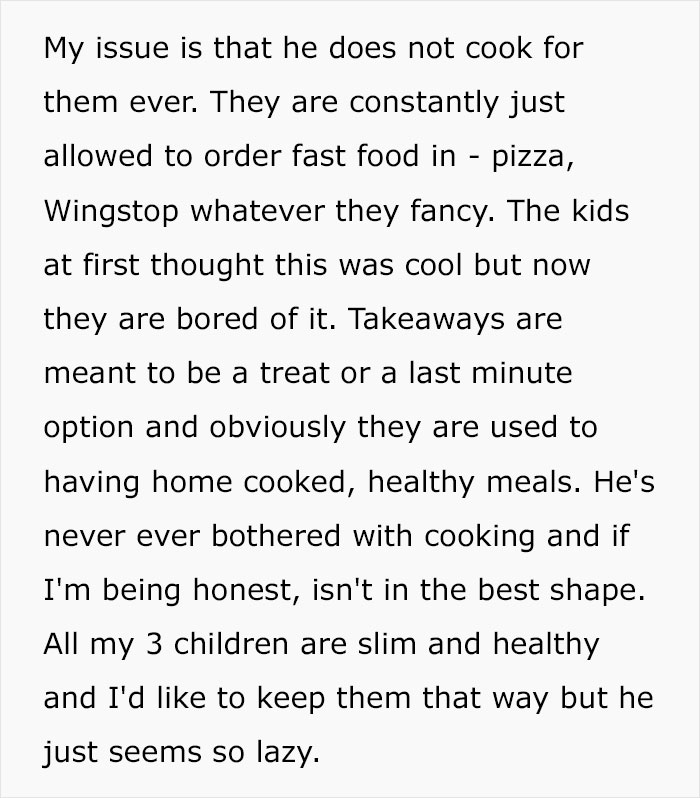

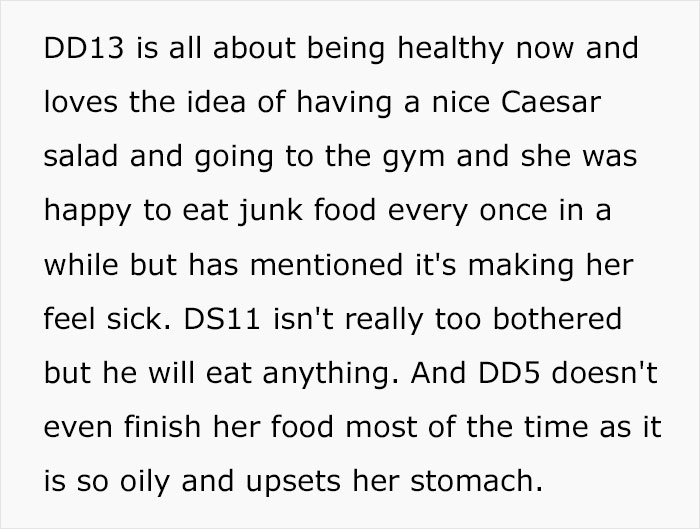



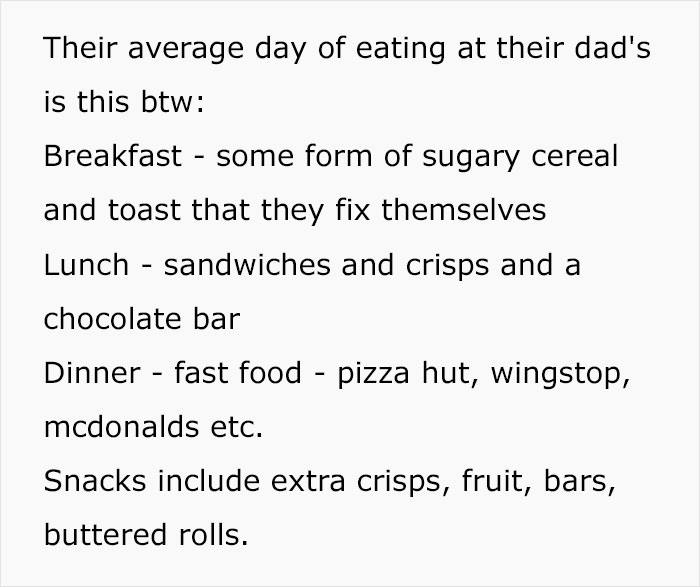

Children and teenagers in the U.S. receive 67% of their calories from highly processed foods
Fast food or junk food is an umbrella term for foods that are full of fats, sugars, and salt, which provide a lot of calories and energy but are relatively low in other important nutrients such as protein, fiber, vitamins, and minerals.
A 2021 study found that children and teenagers in the U.S. receive the majority of their calories (67%) from highly processed foods like frozen pizza, microwaveable meals, cookies, and chips. A 6% jump from 1999 revealed that the overall nutritional profile of the youth is getting worse.
“This is particularly worrisome for children and adolescents because they are at a critical life stage to form dietary habits that can persist into adulthood,” says the senior author of the study Fang Fang Zhang. “A diet high in ultra-processed foods may negatively influence children’s dietary quality and contribute to adverse health outcomes in the long term.”
“Regular consumption of takeout or junk food may lead to malnutrition in children,” says Stacey Woodson, MS, RDN, LDN, registered dietitian, and author to Bored Panda. “Although these foods offer a significant amount of energy, they lack the vitamins and minerals needed for proper development. Additionally, eating lots of these foods early in life may establish preferences for foods that lack nutrient density in adulthood.”
Children who frequently consume risk having high levels of bad cholesterol in their blood, which can lead to heart diseases like hypertension and stroke in the future. Meanwhile, a single fast food meal can add from 160 to 310 extra calories to a kid’s daily intake and can result in unhealthy weight in the long term. And all it takes to increase the risk of asthma, eczema, or rhinitis in younger children is visiting a fast food restaurant three times a week.
Poor nutrition can also lead to worse academic performance, as high sugar levels followed by sugar crashes make it difficult to concentrate and focus on accomplishing tasks that require a longer time to finish. In addition, fast food doesn’t provide enough nutrients for physical activity, which keeps children out of peer groups and can impair their physical and mental health.

Image credits: Caleb Oquendo (not the actual photo)
The responsibility of tackling children’s nutrition problems shouldn’t only fall on parents
That’s far from being all, which proves that children’s nutrition shouldn’t be taken lightly. “It is essential for children to eat a balanced and nourished diet during childhood. Nutritional status in childhood has many lifelong implications that impact growth, immune health, cognitive ability, and mental health. The first 1000 days of life are particularly important and may influence the risk of developing chronic diseases such as diabetes and high blood pressure later in life,” explains Woods.
Parents, of course, are the ones who should first implement the change in their children’s diets. Woods suggests that they start by creating engaging and balanced meals by pairing 2-3 different food groups together, which results in fun, colorful, delicious, and nutritious combinations.
Another option is to include children in meal planning. “Children are more likely to eat or try new things when they have participated in the selection process. Parents can empower children by offering them a choice between two nutritious options, fostering a sense of involvement while maintaining parental control over the overall meal selection.”
It’s worth noting that eating healthy doesn’t have to be difficult. Children can benefit from simply having more home-cooked meals or plenty of healthy snacks on hand, like fruits, vegetables, and drinks such as milk, water, and pure fruit juice. Swapping high-sugar cereals for breakfast to yogurt, cheese, eggs, meat or fish can help kids have more stable moods and energy and score higher on tests. It’s all about replacing the ultra-processed foods with something whole—food that is the closest to its natural form.
However, Zhang notes that the responsibility of tackling this problem shouldn’t only fall on the caregivers. While parents and children should consider replacing the highly processed foods with minimally and unprocessed meals, changes in policy level are needed to achieve a more broader and long-term effect.
Just like it happened with the consumption of soda when the sugar tax and raising awareness about the effects of sugar dropped sweetened beverages to 5.3% from 10.8% of overall calories. “We may have won this battle, at least partially, for some sugary beverages,” Zhang says, “but we haven’t yet against ultra-processed foods.”

Image credits: Caleb Oquendo (not the actual photo)
The mom provided more information in the comments
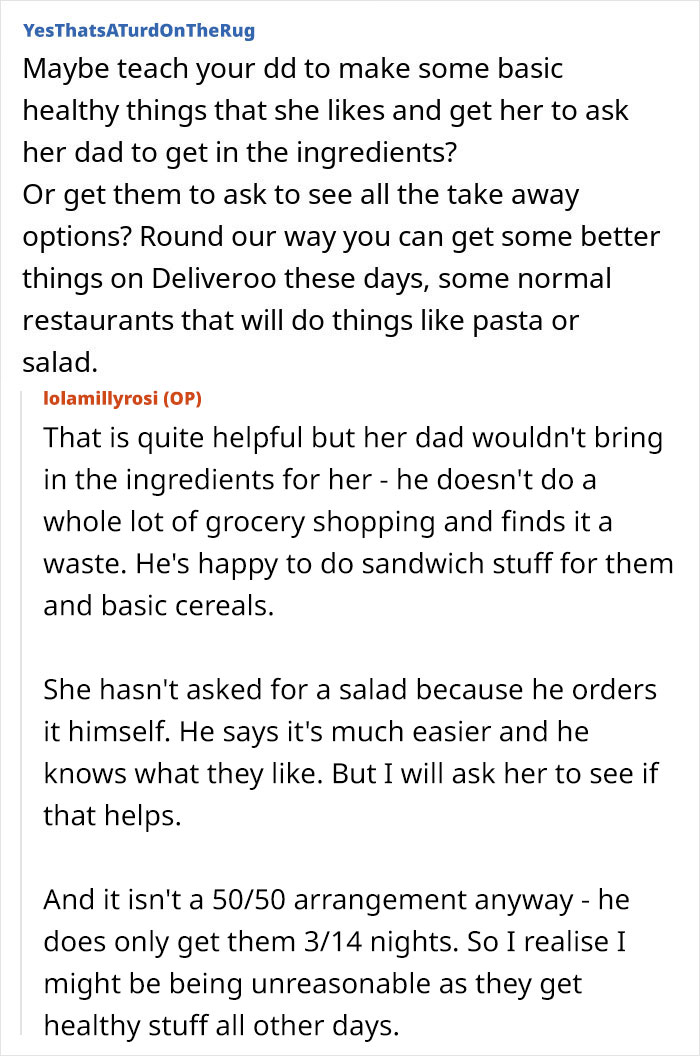

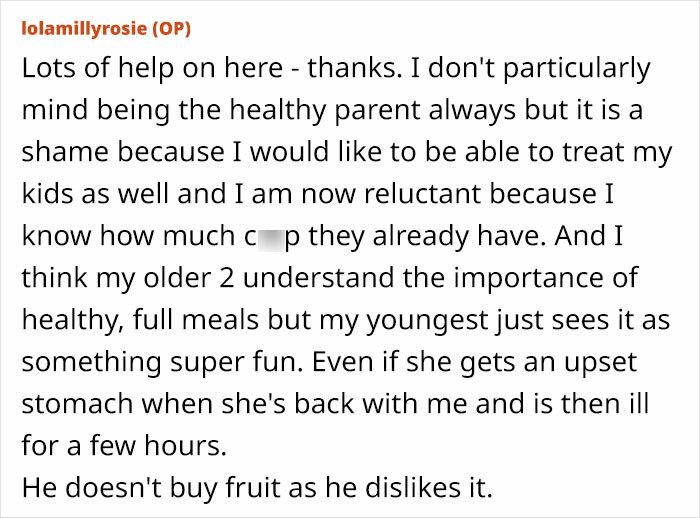
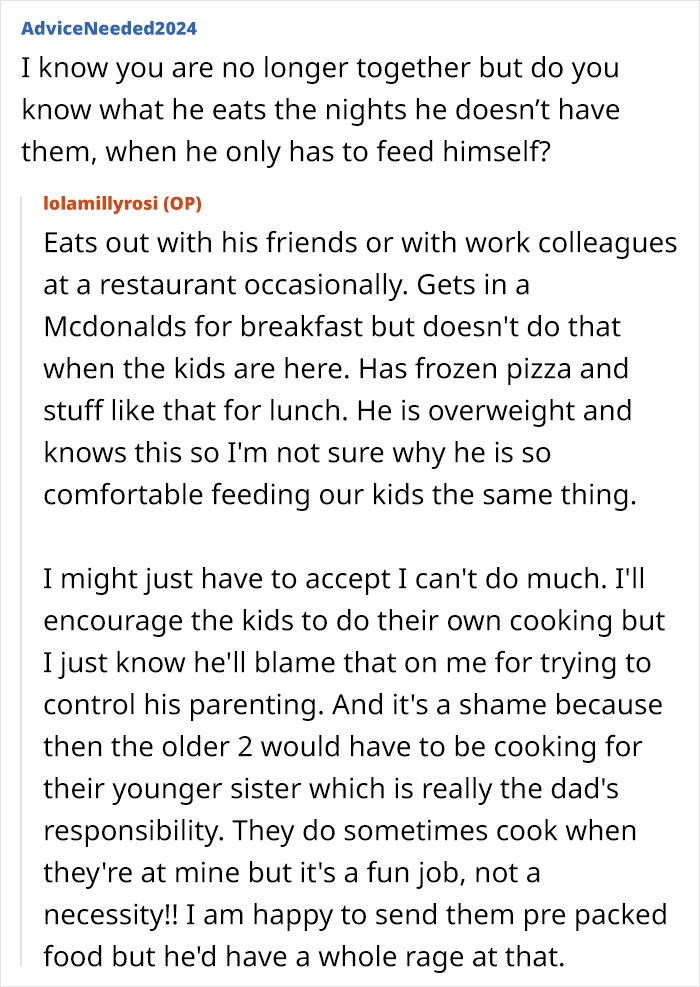
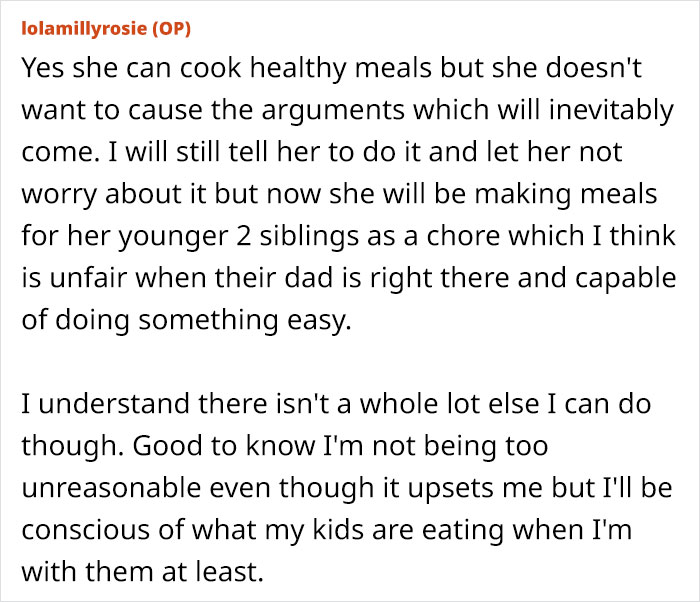

Meanwhile, readers offered some advice




